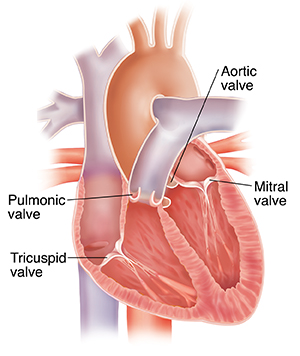Minimally Invasive Valve Surgery
During heart valve surgery, the surgeon repairs or replaces one or more valves. Repair means that the valve is mended to help it work better. Replacement means your diseased valve is removed and a new valve is put in its place. Whether a valve will be repaired or replaced can only be decided once surgery has begun. Your surgeon will talk with you about their plans for surgery and any other procedures you may need. For minimally invasive bypass surgery, cuts (incisions) made in your chest are often much smaller than those made for traditional bypass surgery.

Reaching your heart
To get to your heart, the surgeon must make one or more incisions in your chest. One of two types of incisions may be used. Which type your surgeon chooses depends on where the valve is and what type of surgery is used. Your surgeon will talk with you about which incision you will get.
Stopping your heart
As your heart’s movements must be stopped during your valve surgery, your blood will be kept flowing by a heart-lung machine. This machine gives oxygen to your blood and pumps the blood back through your body. Your surgeon will connect your body to the machine through two tubes. One tube carries blood from your heart. The other tube returns blood to your arterial system. These tubes are usually inserted through blood vessels in your groin. Once the valve surgery is done, your heart and lungs take over again. You are disconnected from the heart-lung machine and the tubes are removed.
Repairing or replacing the valve
Your healthcare provider will discuss with you the types of valves available and what is right for you. To reach the valve, the surgeon makes an incision in your heart or aorta. If the valve can be fixed, the needed repairs are done. If the valve must be replaced, the surgeon may remove part or all of the damaged valve and its support structures. The surgeon picks the right-sized replacement valve, positions it in the valve opening, and sews it firmly into place. The incision in your heart or aorta is closed. Your heart is then started so it beats on its own again.